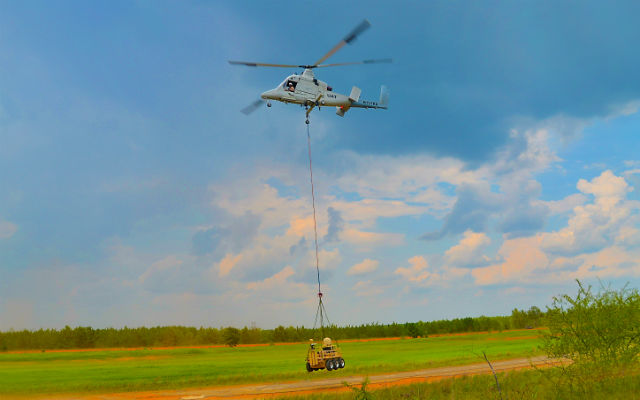The US Army and Lockheed Martin have successfully tested the capability the K-Max unmanned helicopter has to deliver an autonomous ground vehicle.
The army’s Tank Automotive Research, Development and Engineering Center (TARDEC) conducted the “Extending the Reach of the Warfighter through Robotics” testing at Fort Benning, Georgia, in an effort to test “robots moving robots”.
During the perimeter-protection scenario testing the K-Max delivered the up to 2,270kg (5,000lb) Squad Mission Support System (SMSS) – also developed by Lockheed – by slingload, before the ground vehicle carried out further testing using a 9in Gyrocam optical sensor.

Lockheed Martin
“The synergistic use of unmanned air and ground vehicles will give warfighters a larger operational reach, and allow execution of missions that are currently performed at great risk,” says Paul Rogers, director of TARDEC.
During the demonstration, the Gyrocam mid-wave surveillance sensor provided constant video surveillance during each phase of the mission – including while in flight – scanning for threats and providing geo-location co-ordinates of hostile personnel for indirect-fire missions.
Both the SMSS and K-Max were equipped with line-of-sight and mobile satellite communications (SATCOM) systems, and a remote operations centre equipped with SATCOM controlled and monitored the vehicles’ activities throughout the demonstration.
The K-Max was deployed with the US Marine Corps in Afghanistan for cargo transport until it returned from theatre in May 2014.
The USMC is in discussions about potentially making K-Max a programme of record, although up until now it has not been able to offer any further detail on when this could happen, or which budget year it could fall under.
Source: Flight International






















